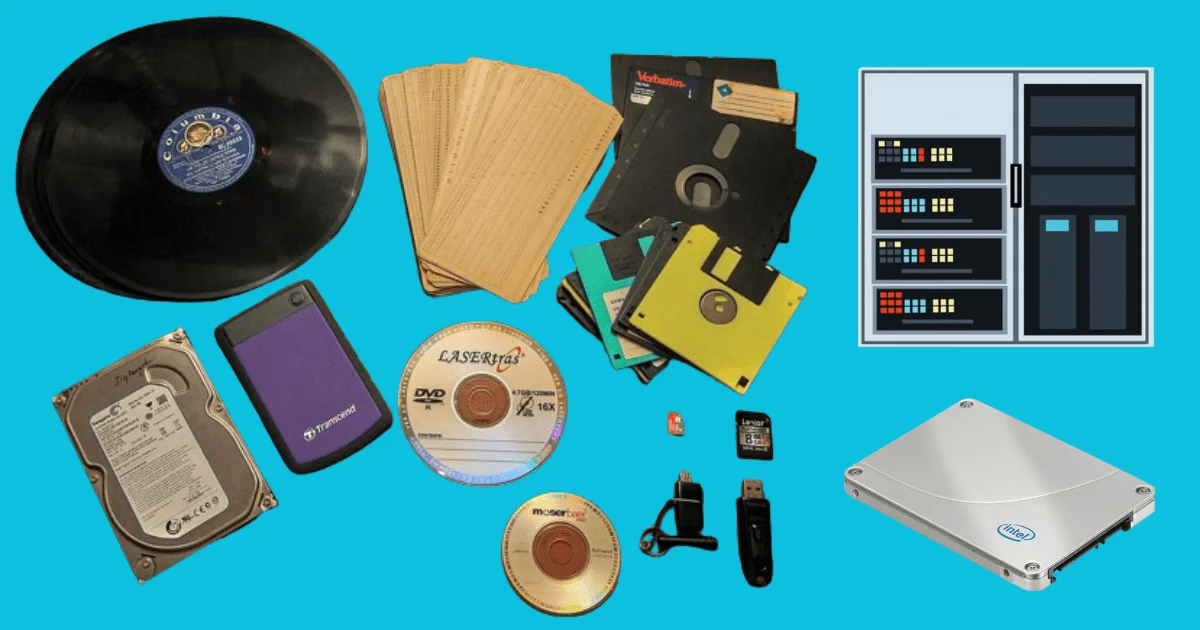The Evolution of Data Storage: Floppy to Cloud Breakthrough

Introduction: the Evolution of Data Storage
The Evolution of Data Storage. Do you recall when floppy disks were the standard method for storing our digital valuables? Fast-forward to the present, and we discover that the cloud is the dominant technology. This essay will examine the amazing evolution that has shaped the data storage industry, which has come a long way.
Table of Contents
ToggleThe Humble Beginnings: Floppy Disks and Magnetic Tapes
1. Floppy Disks: The First Adaptable Media for Speicher
Do you recall floppy disks? The world of personal computing was revolutionized by these miracles of square plastic. In the 1980s and 90s, they were essential tools for storing and exchanging games, papers, and photos, even with their small storage capacity. Even though they seem outdated now, there is no denying their revolutionary impact in their day.
2. Magnetic Tapes: Big Data's Unsung Heroes
Magnetic tapes were silently driving the huge data world, while floppy disks were winning our hearts at home. These robust tape reels served as the cornerstone for the current digital era by storing enormous volumes of data in mainframe computers and data centers.
Hard Disk Drives' Ascent: Greater Space and Speed
1. Hard Disk Drives (HDDs): The Revolutionary Technology
Welcome to the Hard Disk Drive (HDD) era. HDDs swiftly established themselves as the industry standard for both home and business computers thanks to their larger storage capacities and quicker data access times. We could now save our whole digital lives on these sleek, spinning disks, no longer limited to magnetic tapes or floppy disks.
SSDs and Flash Memory the Upcoming Generation
1. Random Access Memory Little but Powerful
When flash memory first appeared on the market, it provided a small, effective replacement for conventional storage options. Flash memory made it possible for us to take our data with us everywhere we went, from USB drives to SD cards, opening the door to a more connected and mobile society.
2. Solid-State Drives (SSDs): Reliability and Speed Meet
Solid-state drives (SSDs) have lightning-fast speeds and steadfast dependability because of flash memory technology. Professionals, gamers, or anyone utilizing a computer for daily work find that SSDs are popular because of their quick start-up times, smooth data access, and durability all without the need for moving parts.
The Revolution in Cloud Computing: Unlimited Data Storage
1. Cloud Storage: The Potential Is Endless
Then the cloud arrived, revolutionizing data storage and altering everything. We are no longer constrained by physical storage devices or geographic locations when using cloud storage. Our data is kept on the cloud and exists on any device, at any time, and from any location. It’s really practical, safe, and scalable.
2. Edge Computing and Hybrid Clouds: The Best of Both Worlds
Hybrid cloud and edge computing arrived as if the cloud wasn’t innovative enough. These cutting-edge methods offer a flexible answer for contemporary data storage needs by fusing the speed and efficiency of local storage with the flexibility and scalability of the cloud.
Handling the Complicated Environment: Difficulties and Possibilities
1. Data Security and Privacy: Safeguarding the Most Important Things
Our responsibility to safeguard it grows along with our storage needs. As an increasing number of our personal lives are conducted online, it is critical to protect our data’s security and privacy. Beyond encryption, adopting multi-factor authentication and being watchful of our online safety are essential ways to keep ahead of the curve.
2. Optimizing Data Storage: Counting Every Bit
It is essential to maximize storage efficiency in a society where data is king. We can optimize our storage capacity, minimize expenses, and guarantee optimal data storage by utilizing technologies such as data deduplication, compression, and tiered storage.
Conclusion
The Evolution of Data Storage. The development of data storage from the period of floppy disks to the massive potential of cloud computing is a monument to the creativity and inventiveness of people. Unquestionably, data storage has a bright, exciting, and promising future as long as we keep pushing the envelope and discovering new possibilities.
FAQs
Cloud storage enables distant data storage and access via the internet, in contrast to traditional storage systems that need physical media.
Data migration across multiple storage options is feasible, albeit the difficulty of the procedure varies depending on the systems involved.
By decreasing file sizes and maximizing storage efficiency, data compression technique advancements can expand storage capacities.
Distributed management, low latency storage, and integration with edge architectures are requirements for edge computing.
Storage solutions guarantee data traceability, compliance, and integrity by capturing change logs and metadata.



Pingback: How To Setup NAS For Beginners - Easy Guide